XAVi Technologies 101MY Wireless Mini PCI 11g Card User Manual
XAVi Technologies Corp. Wireless Mini PCI 11g Card
Manual
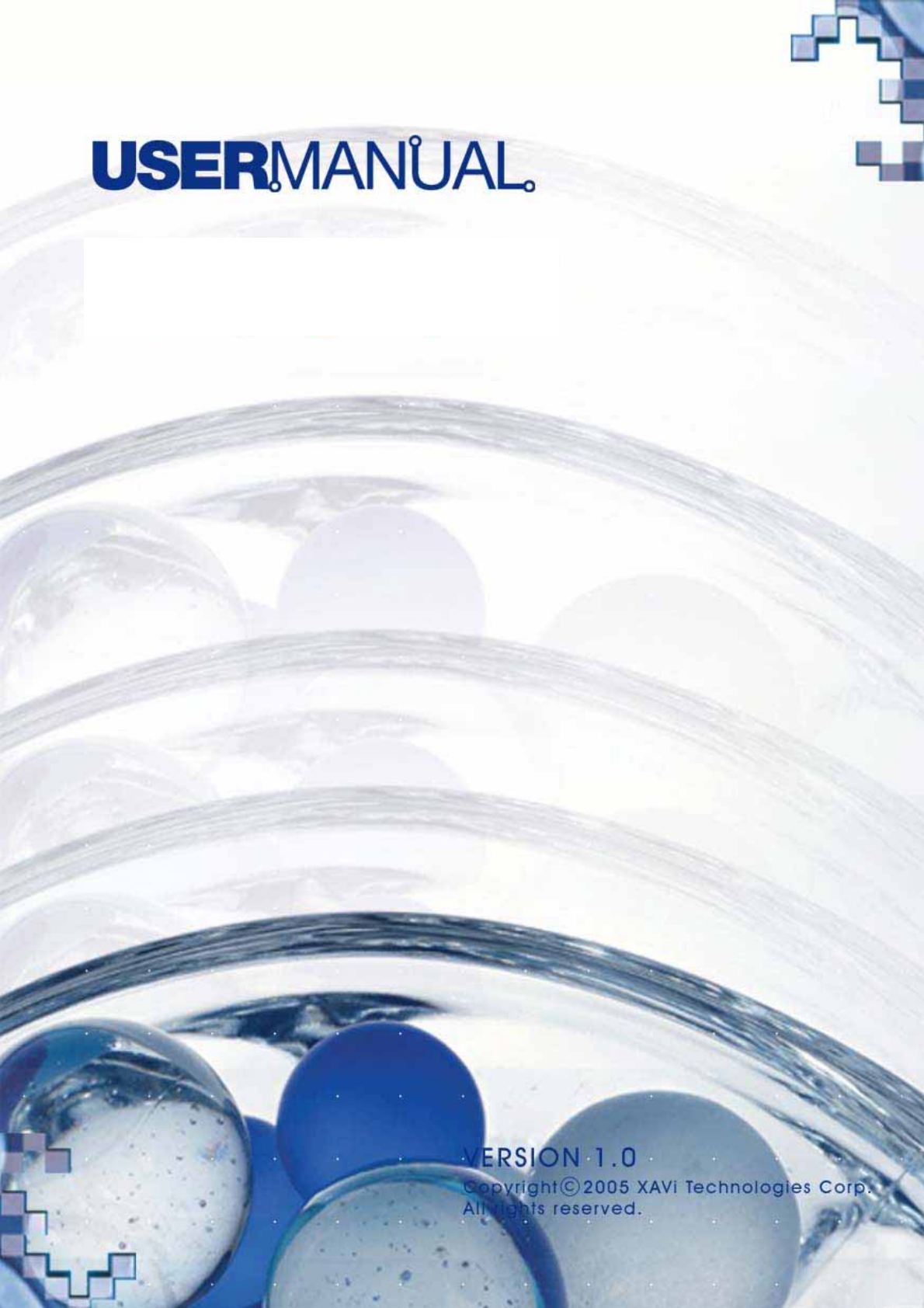

2
XAVi Technologies Corporation
Tel: +886-2-2995-7953
Fax: +886-2-29957954
9F, No. 129, Hsing Te Road, Sanchung City,
Taipei County 241,
Taiwan
Copyright © 2005, XAVi Technologies Corporation
Information in this manual is subject to change without notice. No part of this
manual may be reproduced or transmitted in any form or by any means,
electronic or mechanical, including photocopying or scanning, for any purpose,
without the written permission of XAVi Technologies Corporation.
XAVi Technologies Corporation provides this documentation without warranty
of any kind, implied or expressed, including, but not limited to, the implied
warranties of merchantability and fitness for a particular purpose.

3
CERTIFICATION NOTICE
Federal Communications Commission Compliance Notices
To ensure continued compliance, use only shielded interface cables when
connecting to the computer or peripheral devices. Any changes or
modifications not expressly approved by the party responsible for compliance
could void the user’s authority to operate this equipment.
This device complies with 15 of the FCC Rules. Operation is subject to the
following two
Federal Communication Commission (FCC) Statement:
NOTE: This equipment has been tested and found to comply with the limits for
a Class B digital device, pursuant to part 15 of the FCC Rules. These limits are
designed to provide reasonable protection against harmful interference in a
residential installation.
This equipment generates, uses and can radiate radio frequency energy and, if
not installed and used in accordance with the instructions, may cause harmful
interference to radio communications. However, there is no guarantee that
interference will not occur in a particular installation. If this equipment does
cause harmful interference to radio or television reception, which can be
determined by turning the equipment off and on, the user is encouraged to try
to correct the interference by one or more of the following measures:
Reorient or relocate the receiving antenna.
Increase the separation between the equipment and receiver.
Connect the equipment into an outlet on a circuit different from that to which
the receiver is connected.
Consult the dealer or an experienced radio/ TV technician for help.
Changes or modifications not expressly approved by the party
responsible for compliance could void the user’s authority to operate the
equipment.
The antenna(s) used for this transmitter must not be co-located or
operating in conjunction with any other antenna or transmitter.
The manufacture is not responsible for any radio or TV interference
caused by unauthorized modifications to this equipment. Such
modifications could void the user’s authority to operate the equipment.

4
FCC Radiation Exposure Statement:
This equipment complies with FCC radiation exposure limits set forth for an
uncontrolled environment. This equipment should be installed and operated
with minimum distance 20cm between the radiator & your body.
This transmitter must not be co-located or operating in conjunction with any
other antenna or transmitter.
This device is intended only for OEM integrators under the following
conditions:
1) The antenna must be installed such that 20 cm is maintained between the
antenna and users, and
2) The transmitter module may not be co-located with any other transmitter or
antenna.
3)
As long as 2 conditions above are met, further transmitter test will not be required.
However, the OEM integrator is still responsible for testing their end-product for any
additional compliance requirements required with this module installed (for example,
digital device emissions, PC peripheral requirements, etc.).
IMPORTANT NOTE: In the event that these conditions can not be met (for example
certain laptop configurations or co-location with another transmitter), then the FCC
authorization is no longer considered valid and the FCC ID can not be used on the
final product. In these circumstances, the OEM integrator will be responsible for
re-evaluating the end product (including the transmitter) and obtaining a separate
FCC authorization.

5
Table of Contents
CERTIFICATION NOTICE ............................................. 3
Federal Communications Commission Compliance Notices.....3
Federal Communication Commission (FCC) Statement:............3
INFORMATION TO USER ............................................. 6
Introduction............................................................................................6
Package Contents................................................................................6
System Requirements.........................................................................6
How to Install XW101M: ............................................... 7
Phase I -Install XW101M Driver.....................................................7
Phase II -Install XW101M Hardware Winzard..............................9
Troubleshooting ......................................................... 12
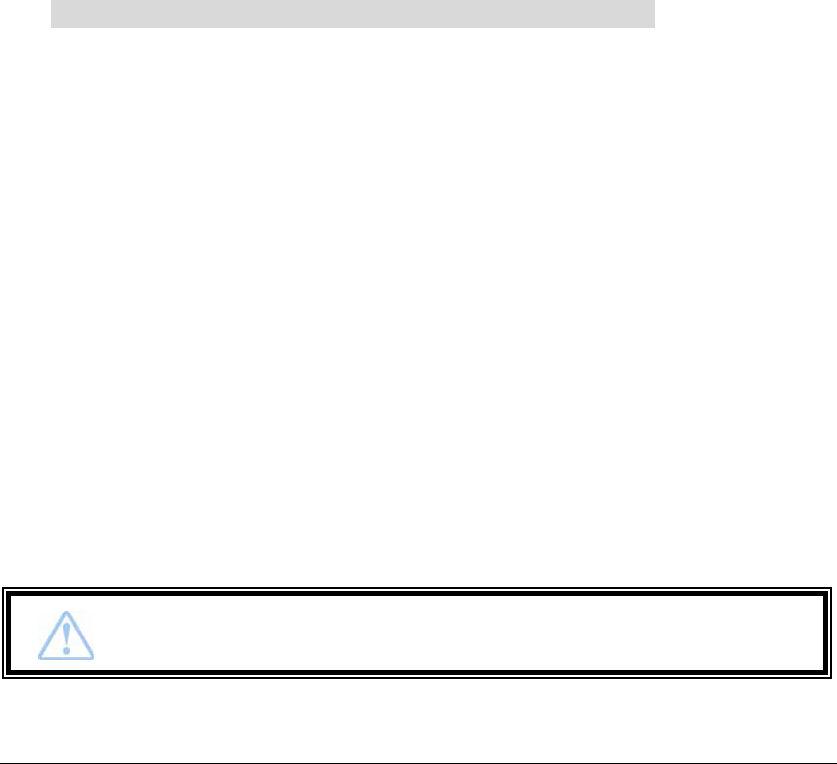
6
INFORMATION TO USER
Introduction
Congratulations on purchasing this 802.11g WLAN Adapter. The XW101M
Adapter 54 Mbps data rate provides an equivalent Ethernet speed to
access corporate networks or the Internet in a wireless environment. And
also provides easy plug & play Installation program on any computer with
interface. When installed, the XW101M Adapter is able to communicate
with any 802.11g-compliant product, allowing you to work anywhere in the
coverage area, enjoying its convenience and mobility.
Package Contents
The shipment should contain the following items. Please check each item
below and ensure that all items listed in below are included in the
shipment. If any of the listed items are damaged or missing, please notify
your local dealer.
XWAVE Series: XW101M WLAN Adapter should contain:
802.11g WLAN Adapter
CD-ROM (containing Drivers and Manual)
System Requirements
Windows ME/ 2000/ XP
If any item is missing, please contact your product provider.
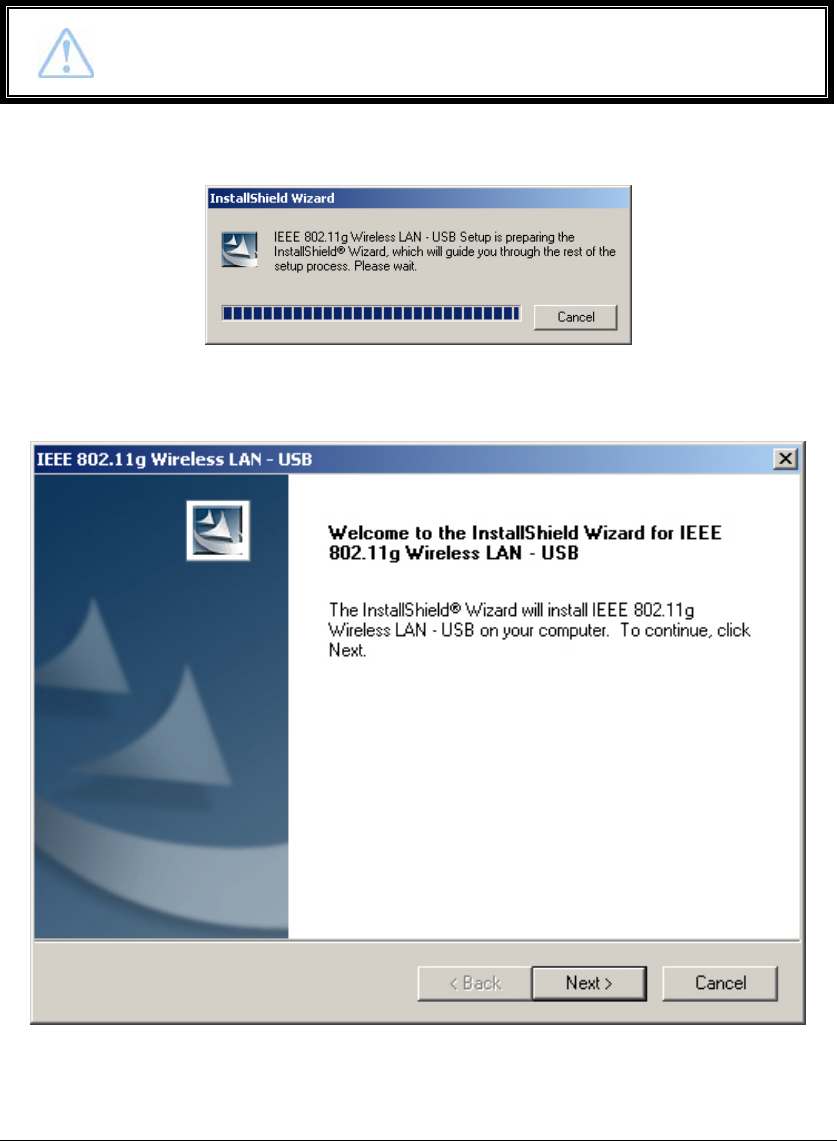
7
How to Install XW101M:
Phase I -Install XW101M Driver
1. Turn on the computer and insert the driver CD into the appropriate drive.
The installation & driver CD will automatically activate the Auto Run
Installation program after you insert the disk into your CD drive.
2. The install will automatically appear.
3. Click Next to continue.
Do not insert your WLAN Adapter into the slot until you
have finished the software installation.
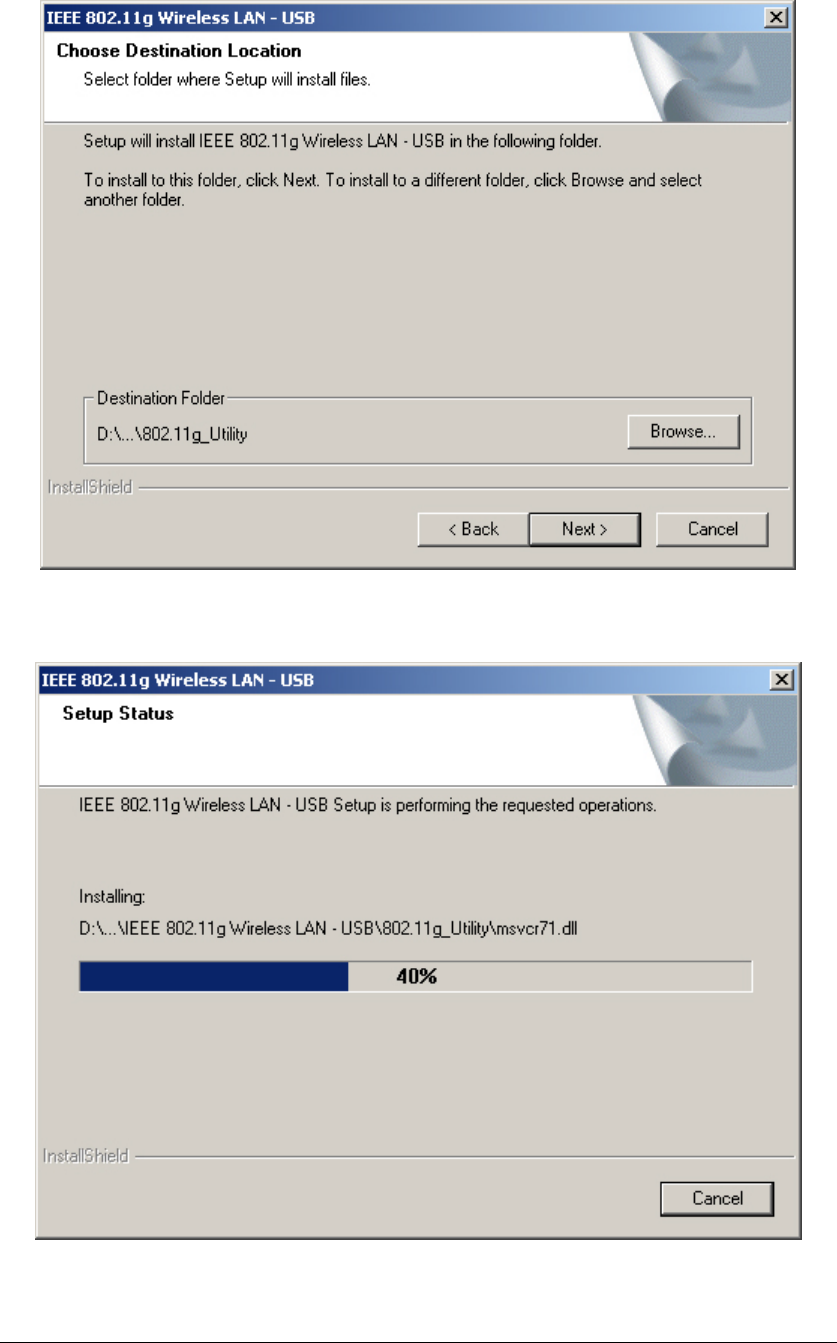
8
4. Click Next to install at the designated folder. Or, click “Browse” to select
different folder.
5. Start copying files until it finish the installation.
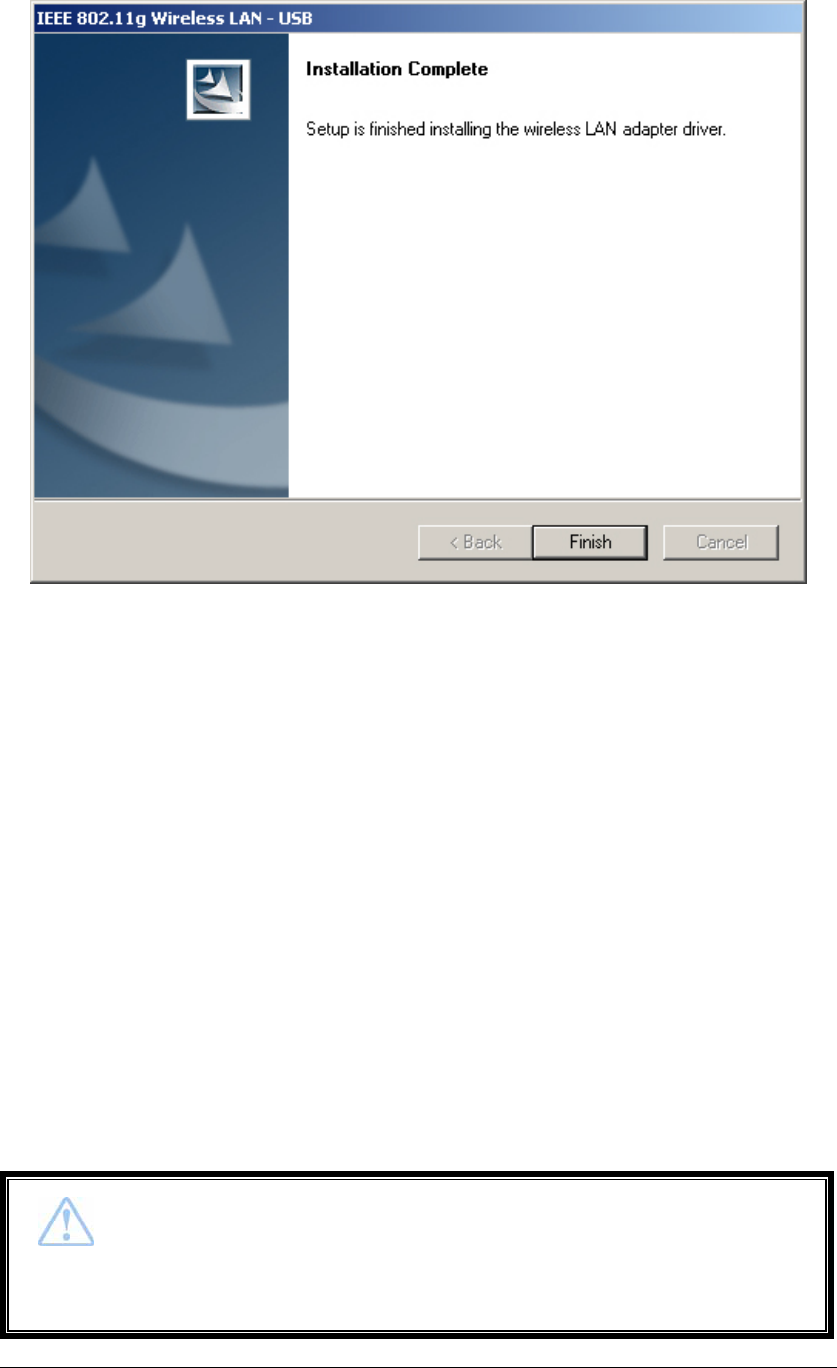
9
6. Click Finish to complete installation.
If the AutoRun function on your computer does not
automatically start, the select your CD-ROM driver and
double-click the file, SETUP.EXE under the Windows
director
y
.
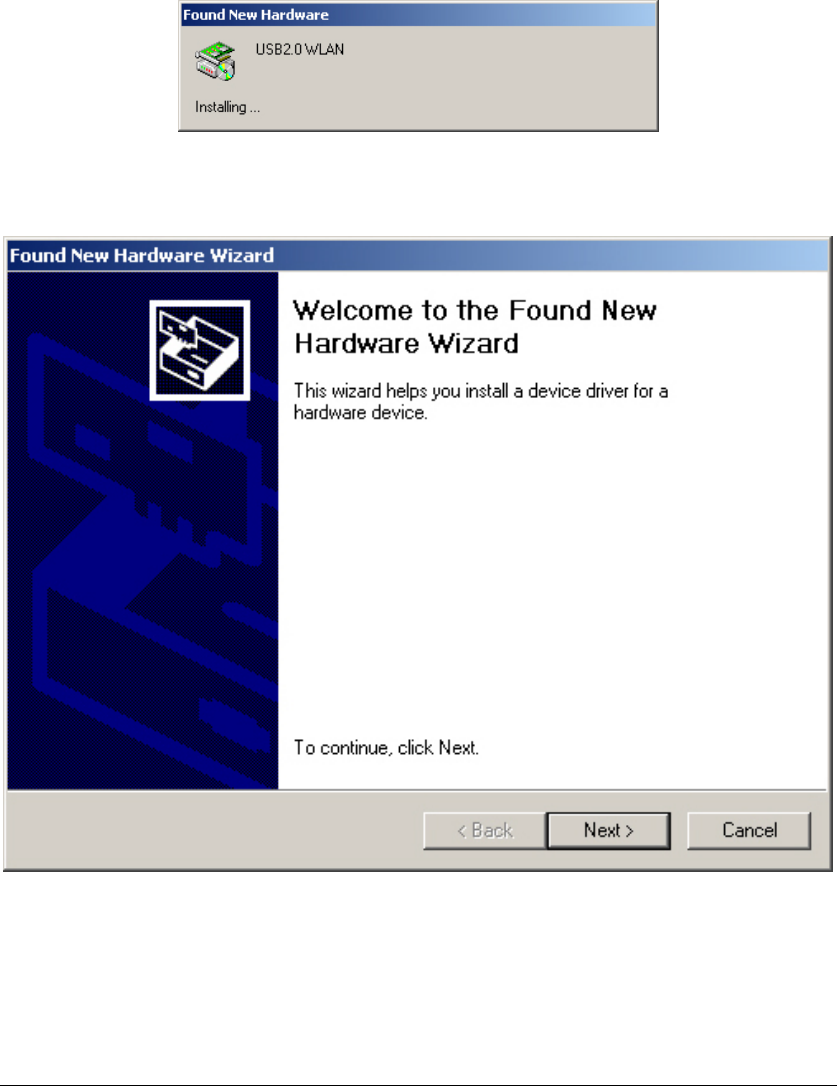
10
Phase II -Install XW101M Hardware Winzard
1. Find the location of the slot on your desktop or laptop. And insert the
802.11g WLAN Adapter into the slot on your desktop or laptop.
2. After inserting the WLAN Adapter into your computer, Windows will
automatically detect that new hardware has been installed. Depending on
which operating system you are using, the steps and screens may differ
slightly. Click “Next” to continue installing.
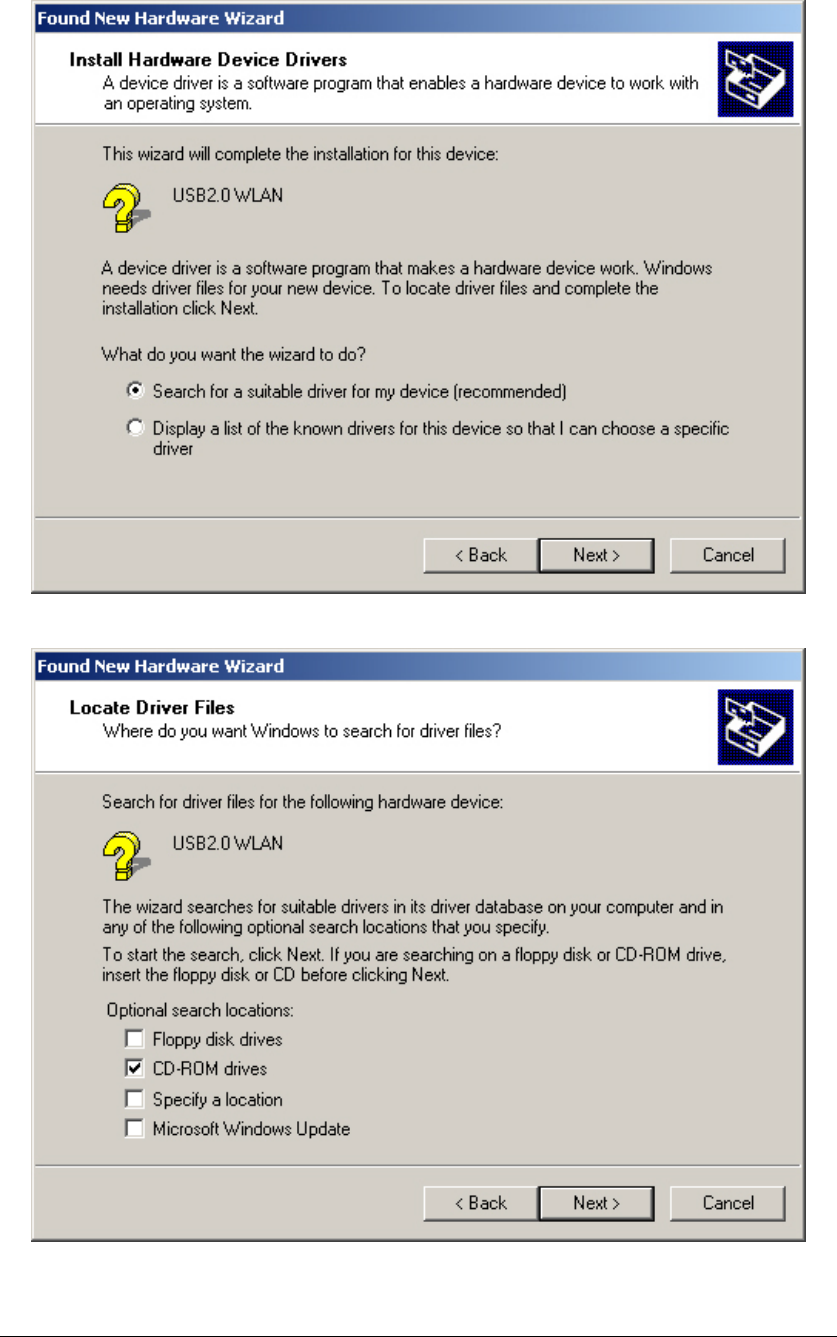
11
3. For searching a suitable driver automatically, check the item as shown
below.
4. Select “CD-ROM drivers” for looking for suitable drivers for XW101M.
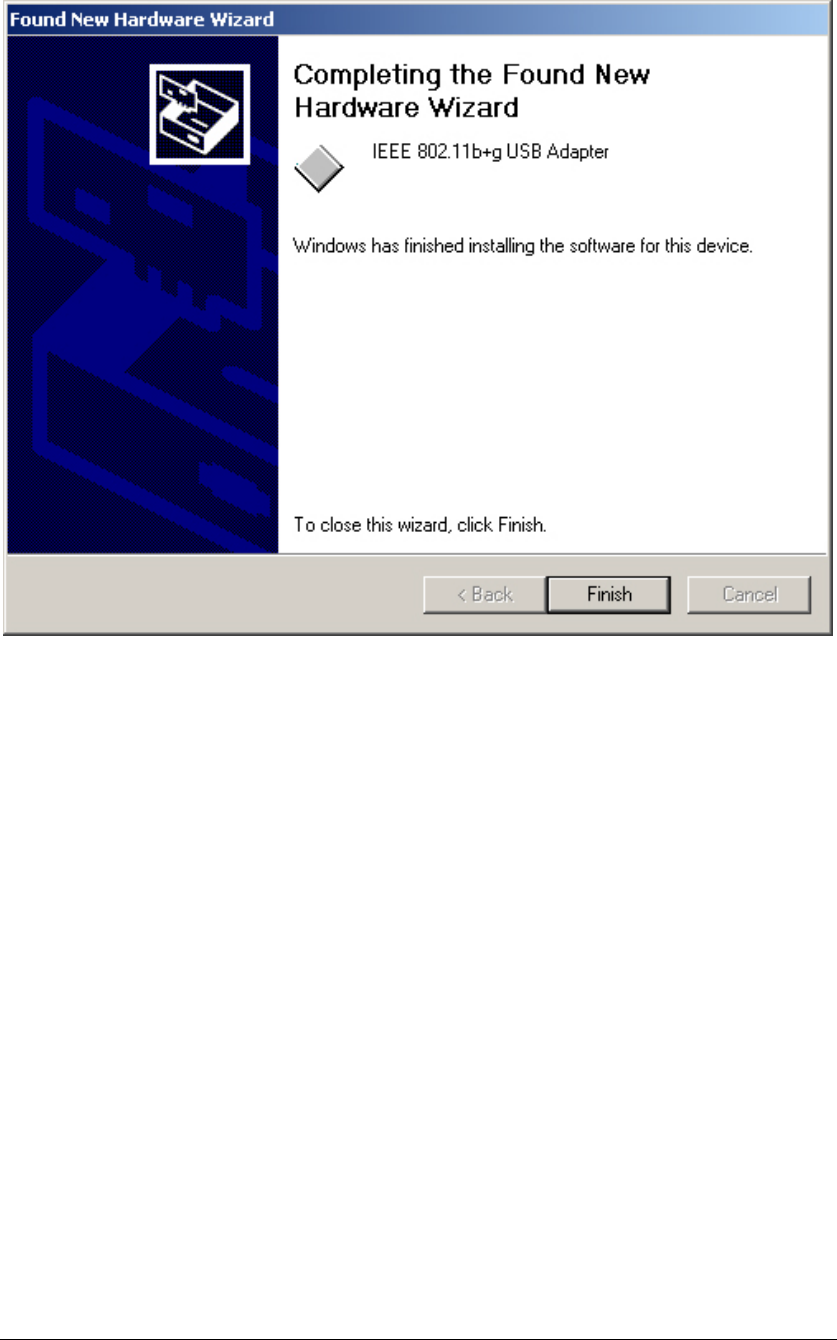
12
5. Press the “Finish” button to finish to finish the package installation.
After finishing the phase 1 installation of the driver, the NoteBooK (or PC) with
WinME OS shall be restarted, but Win2000 or WinXP OS doesn’t need to be
restarted.

13
Troubleshooting
This chapter covers potential problems you may run into and the possible
remedies. After each problem description, some instructions are provided to
help you to diagnose and solve the problem.
Q: When you encounter problems, there are some preliminary
checklists that can help you to dig out the problems before you take
further actions?
A: - Try to isolate which part of the computer’s network connection is causing
the problem.
- Absence of, or conflict of the WLAN Card driver. Make sure that all device
drivers are correctly installed (refer to chapter 3).
- Determine if the location of your WLAN Card is not conducive for wireless
transmission (refer to chapter 2 “Site Selection”).
If a problem persists after you follow the instructions in this chapter, contact an
authorized dealer for help.
Q: When you encounter problems during Installation?
A: Don’t insert your WLAN Card into the slot until you have finished the
installation. If in case you should mistakenly insert your WLAN Card into your
computer before installing the driver and utility, then perform the following to
correct it:
Remove the WLAN Card from the slot.
Insert the driver CD into the CD-ROM drive and double-click the file
SETUP.EXE under the Windows directory. It would locate the already installed
driver and utility and uninstall it.
Re-boot your system after uninstalling.
Refer to chapter 2 and follow the instructions to properly install the driver and
utility before inserting the WLAN Card.
Re-insert the WLAN Card to the computer again.
Check if the I/O and IRQ for the WLAN Card have conflict problems with other
devices connected to your computer.
For Windows 98SE / 2000 / Me operating system, make sure that the device
driver is installed on your computer.
Q: During using Configuration & Monitor Utility, when you encountered
the problem to connect?
A: - Use the Monitor utility of your Configuration & Monitor Utility to check
the Link Quality of your WLAN Card with the AP it is associated with

14
(Infrastructure mode) or with other wireless station(s) (Ad-Hoc mode).
- Use the Site Survey utility of your Configuration & Monitor Utility to check
if there is high interference around the environment.
Q: When you cannot connect with Access Point?
A: - Make sure that the Access Point that your WLAN Card is associated with
is powered on and all the LEDs are working properly.
- Reconfigure and reset the Access Point.
- Use the Web Manager / Telnet of the Access Point to check whether it is
connected to the network.
Q: When Infrastructure mode is configured, the WLAN card cannot
communicate with the computer in the Ethernet?
A: - Make sure that the Access Point your WLAN Card is associated with is
powered on.
- Use the Site Survey utility of the Configuration & Monitor Utility to
verify if the operating radio channel is in good quality. Or, change the Access
Point and all the wireless station(s) within the BSSID to another radio channel.
- Out-of-range situation, which prevents the WLAN Card from establishing a
wireless connection with the network. Move the WLAN Card closer to the
Access Point it is associated with.
- Make sure that your WLAN Card is configured with the same security option
(encryption) to the Access Point.
- Make sure that the BSSID is the same as the Access Point for a
roaming-disabled wireless station, or the ESSID is the same as the Access
Point for a roaming-enabled wireless station.
Q: What should I do when I cannot access the network?
A: - Make sure that the necessary driver(s) was correctly installed.
- Make sure that the network configuration is appropriate.
- Make sure that the user name or password is correct.
- You have moved out of range of the network.
- Turn off power management.
Q: When the Configuration & Monitor Utility does not work correctly.
A: - Make sure that the Configuration & Monitor Utility is correctly installed
(refer to chapter 5).
- If you are sure the operation has stop, reset the computer.